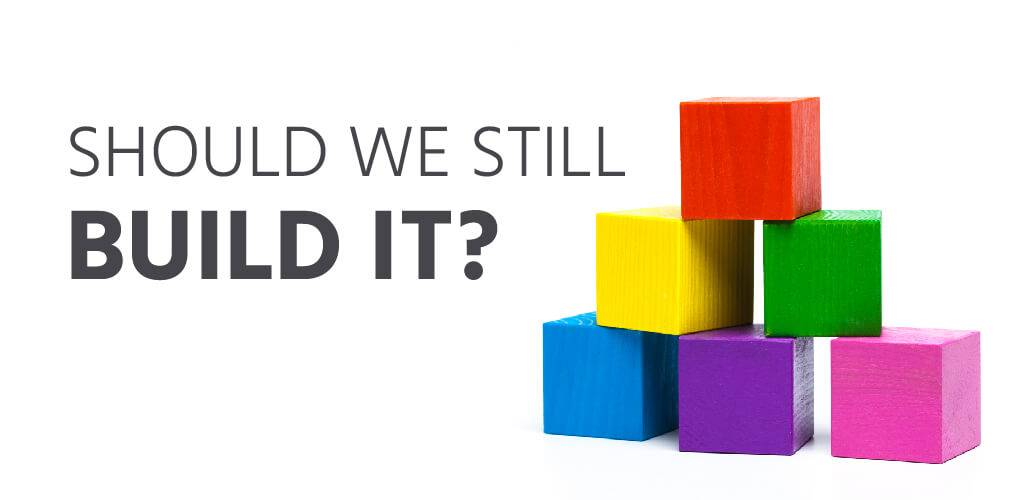Learning technology: If you build it, they won’t come
March 15, 2018
Is just building learning technology enough? Modern learners are increasingly looking for a learning experience at work that mirrors the way they learn and discover information in their social lives.
Interconnected, social-media-savvy learners expect faster, more relevant answers to their search for knowledge – and in real time.
They’re turning away from the more traditional learning technology and content in favour of Google, YouTube and wikis to help them find solutions where and when they need to.
So, if you’re building a learning arena these days, how can you be sure anyone will turn up for the show?
Address expectations
It’s important to recognise that learners’ expectations are changing. With new technology and content on demand, learners are used to formulating their own learning objectives and finding ways to meet them. You can acknowledge this by designing a learning environment that allows learners to take control of their learning path.
You also need to have learners invest in their learning. Make it relevant so that they believe that what they’re learning will make them better at their jobs. Learning should address a need that they themselves perceive, rather than one you’ve created for them.

Learners will only take control and invest in their learning if they see a benefit. Otherwise, they might view asking them to take control as shifting responsibility, or worse abdicating it altogether.
Changing the environment in which learning takes place can help. Organisational culture can reinforce a sense of personal responsibility for learning, tying it to improved performance, peer recognition, and personal reward.
Provide motivation
Taking control of learning can only happen if there’s a motivating factor. Learning that’s targeted at improved performance gives learners purpose, direction, and incentives. Learners feel personally invested in learning.
Performance management within the organisation sustains that investment. Tying learning requirements to performance objectives emphasises the relevance of the learning. Benefits include increases in pay, the prospect of bonuses and other forms of recognition within the organisation.

The benefits of collaboration
You can incentivise individual learners to engage more with learning, but real success comes when you combine individual motivation with peer collaboration.
People learn better when they share knowledge and ideas, particularly when they’re working together. Peer pressure and solidarity can produce an environment where sharing information is seen as desirable, necessary, and mutually beneficial.
This represents a cultural shift within the organisation and requires buy-in and support from senior management.
The right learning strategies
Learning, as we know, isn’t a one-off event. Part of the dissatisfaction with learning technology is that it’s often based on a single occasion or single point of interaction. To really change the culture of learning within an organisation, we need to make it sustainable.
Running learning like a campaign can help. Campaign-based learning means constantly engaging new learners, keeping messages up to date and fresh, providing reinforcement and recall of learning through practice, making learning stick by playing the long game and supporting people in changing their learning habits so that they learn while they’re doing their regular jobs.
Micro-learning – learning in bite-sized chunks on the go – is a good example of campaign-based learning. It gives learners a sense of control over what they’re learning and when they’re learning it. It can help personalise learning and provide that agility modern learners and organisations require.
Also, use technology to make learning a social experience through online contact and face-to-face interactions. These forms of engagement can help create learning cohorts: groups of people working and learning together.

These ideas may sound great, but how do you make them a reality? Easy access to learning is critical but to make that happen you first need to remove some barriers.
Time is always a key asset for any organisation. Often learning means employees are taken away from their jobs to do some mandatory training. Everyone is expected to attend. The trouble is that even if everyone does participate, most are likely to forget what they’ve learned. And when they want to recall it they have no access to the material.
Learning at the point of need
A more effective way is to provide learning in a way that learners can access it when they need it, where they need it, on their own time and device.
Locking away content in a training room, user manual or on an LMS creates another barrier. Consider how accessible your learning content is. So, think about ways of making it more accessible by breaking it down and making available on multiple devices in the workspace.
And where is that space? Not everyone is at a desk. In this mobile world, people need and expect information on the go. Assume that about learning too.

The answer to that question is a categorical yes. But don’t build it in the expectation that they have to come: entice them in.
Technology allows us to make and build connections. We see it all the time in the way people use social media. The same can apply to learning. Technology should be about breaking down barriers not reinforcing them. If you can run learning like a campaign and make it inclusive, you give employees a learning environment in which they can invest and whose benefits they see.
Motivating learners and bringing them together in a learning network offer the prospect of more sustainable learning, leading to better on-the-job performance and a more rewarding learning experience.
It’s all about access
At Learning Pool we recognise the challenge for learning technology. It’s our business to provide learning that is relevant and accessible.
With our chatbot Flo we’re harnessing the power of AI to give learners control over what they need when they need it. We’re making learning technology smarter and more agile, in keeping with the modern learner who expects instant access to the world’s knowledge via smart devices.
But we also know that modern workers need very particular learning at a key moment on the job. By using technology to embed learning in the workflow, we’re looking to improve performance and provide real benefits for organisations and individuals alike.
To go back to the ‘Field of Dreams’ analogy, you may have built it, but to make sure they come you need to make it ‘access all areas’.
About the author
Andy Hurren has been leading L&D teams at npower Ltd for the past eight years and has been the organisation’s head of learning since May 2015. During this time, Andy has lead the complete restructuring of the L&D function and moved from a very traditional model of training to a completely blended learning approach.
Before joining npower Ltd, Andy ran his own training and development consultancy delivering programs in sales, customer service and management development. Andy is also a Fellow of the Learning and Performance Institute.
Got a learning problem to solve?
Get in touch to discover how we can help

